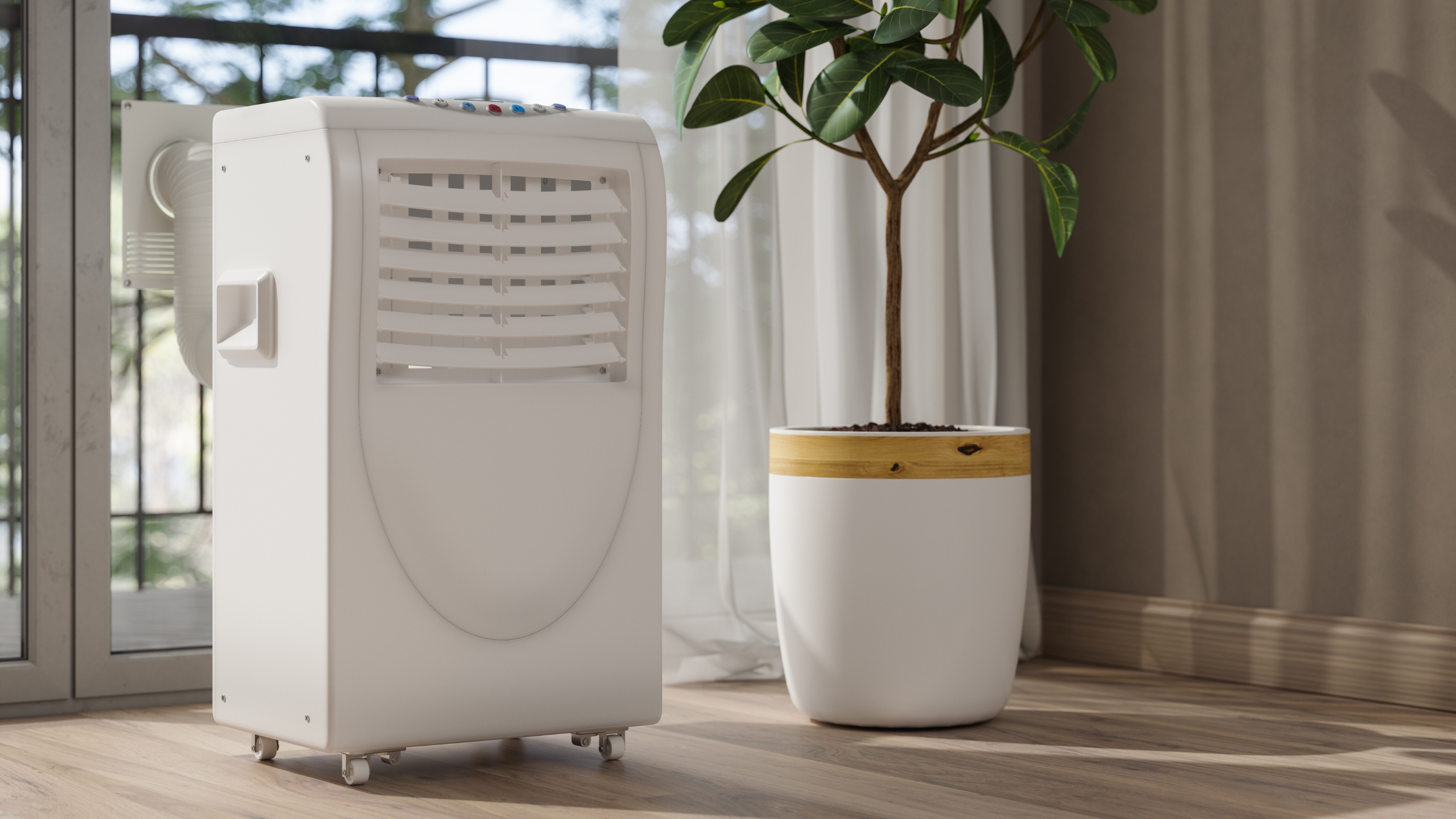

Are you asking yourself 'what size dehumidifier do I need' before picking one up? Don’t worry, you’re not alone in feeling confused when it comes to selecting a dehumidifier for your home, the process can be a little overwhelming, especially when you’re trying to find the right size to fit your space.
I’ve just moved into a new place myself and it has a little bit of a damp and black mold problem. So I’ve been testing out a few dehumidifiers in a bid to work out which ones work best to combat the issue.
If you’re looking at using one of the best dehumidifiers in your home to help banish humidity-related issues, then determining what size you need is a good place to start. To give you a helping hand, I’ve chatted to the experts and got the lowdown on what you need to consider when it comes to choosing the right size dehumidifier.
What size dehumidifier do I need?
Trying to work out what size dehumidifier you need to help get rid of mold, condensation, or other humidity-related issues in your home? These expert-approved tips will make the process of choosing a dehumidifier far easier.
1. Measure the space
It might sound like a pretty simple step but it's one that it's easy to forget to think of. So, before choosing a dehumidifier ( like this HomeLabs one from Amazon that has over 40,000 five-star reviews) for your home, it's good practice to simply measure the size of the space that you plan on using the device within.
Josh Mitchell, HVAC technician and the owner of airconditionerlab.com, says: "The first step is to measure the square footage of the space where you plan to use the dehumidifier. Dehumidifiers are rated by the amount of moisture they can remove in a day (measured in pints) and their efficiency in specific-sized areas."
By taking the time to measure the space, you can better determine how much moisture you're likely to need to remove on a daily basis, which will help when selecting a dehumidifier size.
2. Assess the humidity levels
You know that the space feels humid or you can see the visible signs of an issue with excess water vapor, such as condensation or mold spots, but you're not sure exactly how humid the area is. That's where measuring the humidity levels can come in handy.
Mitchell says: "The level of humidity in your space significantly impacts the size of the dehumidifier needed. For moderately damp rooms (feeling slightly moist), a smaller unit might suffice. However, for very damp or wet areas (where you may notice wet spots or smell mildew), a larger, more powerful dehumidifier is necessary. Hygrometers (like this ThermoPro one from Amazon that has over 99,000 five-star reviews) can be used to measure the humidity level in your home, giving you a clearer idea of what you need."
By measuring the humidity in a room, you can determine just how bad the problem is and work out how much water vapor you may need to remove on a regular basis.
3. Understand that size is vital for effectiveness
It's easy to forget how important getting the right size dehumidifier is, but if you're serious about using a dehumidifier in your home to help prevent humidity-related issues, then it's important to understand how vital the correct size device is to achieving success.
Alexander Wright, Chief Information Officer at REIInsiders.com, says: “When choosing a dehumidifier, the size is critical for efficiency and effectiveness. It's all about the space's square footage and the level of dampness.
“For moderate dampness in a 500-square-foot area, you'll want a dehumidifier that can remove about 10 pints of water per day. But if that same area is very wet, you might need one that can handle up to 16 pints.”
As well as taking the size into account, it's important not to forget to take how wet the area is into account, as this will impact how effective different-size dehumidifiers are when used in the space.
4. Always opt for a larger capacity option
If in doubt, it's always advisable to opt for a larger capacity dehumidifier than you think that you will need.
Wright says: “Always opt for a slightly larger capacity than you think you'll need. This way, your dehumidifier isn't working overtime, which can save on energy costs and extend the life of the unit. In my experience, it's better to have a bit more dehumidifying power than not enough.”
By choosing a slightly larger capacity device, you can ensure that you've definitely opted for a dehumidifier that's equipped to deal with the size and conditions of the space.
5. Take the conditions of your space into account
When thinking about the size of the dehumidifier that you need, it's important to take the conditions of the space into account.
Wright says: “Remember to also consider the specific conditions of your space. If there are many windows or the room is in a particularly humid climate, you may need to adjust your choice accordingly. Data shows that homes in humid regions can have indoor humidity levels up to 10% higher than average, necessitating a more robust dehumidifier.”
Mitchell adds: "If the room is regularly occupied or contains many houseplants, or if it's a space like a kitchen or laundry room that naturally has higher moisture levels, you'll need a more robust dehumidifier. Similarly, basements or areas with poor ventilation require larger units due to their propensity to retain moisture."
Meet the experts

Alexander Wright is CIO at REI Insiders, an all-encompassing platform that empowers individuals to achieve financial stability and a fulfilling life through real estate investing. He's also an expert on all things related to property management and care.

Josh Mitchell is a HVAC technician and the owner of airconditionerlab.com.
FAQs
How are dehumidifiers sized?
As a rule of thumb, dehumidifiers are usually sized by the total moisture removal capacity that the unit holds, which is rated by moisture removal amounts per day.
Is a Hygrometer easy to use to measure humidity levels?
Yes, a Hygrometer is easy to use to measure humidity levels. All you need to do is place is in the room that you want to measure and the Hygrometer will do the rest for you, alerting you to how high the humidity levels are in that specific space.
Now that you know what it takes to choose the right size dehumidifier for any space within your home, you might be wondering what steps you can take to combat humidity-related issues that have already occurred, like dealing with a moldy shower curtain.
You might also be wondering about how you can care for and maintain your dehumidifier once you've purchased one, and what steps it takes to keep a dehumidifier clean and working efficiently.
Join our newsletter
Get small space home decor ideas, celeb inspiration, DIY tips and more, straight to your inbox!

Hi! I’m Beth Mahoney and I’m a former staff writer at Real Homes. I’ve been a journalist for the national press for the past six years, specializing in commerce and trends-related lifestyle articles, from product reviews and listicles to guides and features. With an eye for pretty things (think: quirky wall prints, scalloped edge furniture, and decadent-looking tableware) but a limited budget, I love nothing more than a bargain buy.